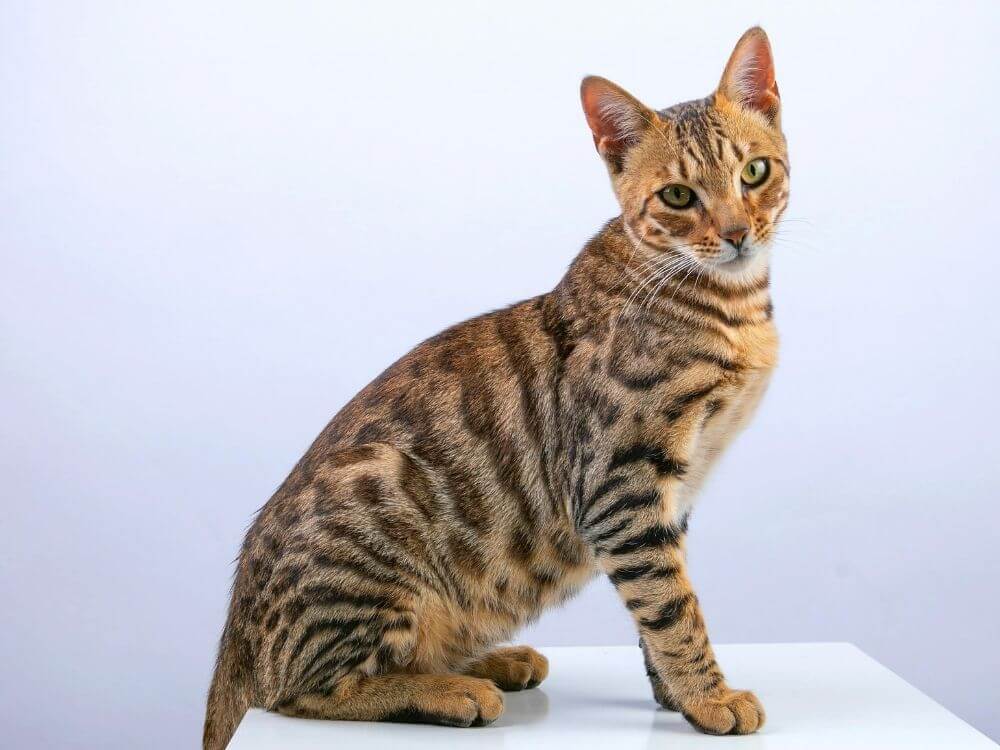The Bengal Cat: A Guide to This Exotic and Playful Breed

Bengal cats captivate cat lovers with their wild appearance and playful personalities. Originating from a hybrid of domestic cats and the Asian leopard cat, Bengals are both beautiful and intelligent. Let’s dive into everything you need to know about this unique breed.
A Brief History of the Bengal Cat
The Bengal cat’s story began in the 1960s when breeders sought to create a domestic cat with exotic looks. They crossed domestic cats with the Asian leopard cat, a small wild feline native to Asia. Over time, selective breeding emphasized friendly, playful temperaments while preserving their stunning appearance. By the 1980s, Bengal cats gained recognition as a distinct breed.
Distinctive Physical Features
Bengals boast a wild, leopard-like appearance that sets them apart from other breeds.
Coat Patterns and Colors
Their most notable feature is their luxurious coat, adorned with spots, rosettes, or marbling. Common coat colors include:
- Brown Tabby: The classic leopard-like pattern with golden, orange, or brown tones.
- Snow: Pale, creamy hues with light gray or brown markings.
- Silver: Striking silver fur with contrasting dark spots or rosettes.
Their coats feel soft and silky, often described as “buttery” to the touch.
Size and Build
Bengals are medium to large cats, with males weighing 10-15 pounds and females 8-12 pounds. Their muscular build and long legs give them an athletic and agile appearance.
Personality and Behavior
Bengals are not just about looks; their vibrant personalities make them exceptional companions.
Playful and Energetic
Bengals are highly active and love interactive play. They enjoy chasing toys, climbing furniture, and exploring their surroundings. Providing them with cat trees, tunnels, and puzzle toys keeps them mentally and physically stimulated.
Intelligent and Curious
These cats are incredibly smart and enjoy solving puzzles or learning tricks. They can be trained to fetch, walk on a leash, or even perform simple commands. Their curiosity often leads them to investigate cupboards, drawers, or other hidden spaces.
Affectionate Yet Independent
While Bengals enjoy spending time with their humans, they also value their independence. They may follow you around the house but prefer to initiate cuddles on their own terms.
Vocal and Expressive
Bengals are known for their vocal nature. They communicate through a wide range of sounds, from chirps and trills to meows and purrs.
Caring for a Bengal Cat
Bengals require a bit more attention and care than some other breeds due to their high energy levels and intelligence.
Diet and Nutrition
A Bengal cat’s diet should consist of high-quality protein to support their active lifestyle. Many owners choose premium commercial cat food or a raw diet. Consult your vet to ensure their nutritional needs are met.
Exercise and Play
Daily play sessions are essential to keep Bengals happy and healthy. Interactive toys, laser pointers, and climbing structures help burn off their energy.
Grooming
Bengals have a short, low-maintenance coat. Weekly brushing keeps their fur sleek and removes loose hair. They also benefit from regular nail trimming and dental care.
Health Concerns
While generally healthy, Bengals can be prone to certain conditions, including:
- Hypertrophic Cardiomyopathy (HCM): A heart condition common in many cat breeds.
- Progressive Retinal Atrophy (PRA): An eye disorder that can lead to blindness.
- Flat-Chested Kitten Syndrome (FCKS): A condition that affects some kittens but often resolves as they grow.
Regular veterinary checkups help catch and manage potential health issues early.
Living with a Bengal Cat
Best Environment
Bengals thrive in homes that provide plenty of stimulation. They need space to run, climb, and explore. Apartments can work if you provide ample vertical spaces, like shelves or cat trees.
Interaction with Other Pets
Bengals usually get along well with other cats and even dogs. Early socialization ensures they adapt to multi-pet households. Their playful nature can sometimes overwhelm timid animals, so introductions should be gradual.
Compatibility with Children
Bengals often enjoy the company of children who can match their energy. Teach kids to handle them gently and respectfully.
Why Choose a Bengal Cat?
Bengals are ideal for active households that can meet their need for play and attention. Their intelligence and charm make them endlessly entertaining companions. If you’re looking for a cat that combines wild beauty with a loving temperament, the Bengal is an excellent choice.
Finding a Bengal Cat
Reputable Breeders
When choosing a Bengal, work with a responsible breeder. Look for breeders who prioritize health, temperament, and ethical practices. Always visit the breeder’s facility to meet the kittens and their parents.
Rescue Organizations
Many Bengals end up in shelters or rescue groups due to their high energy levels. Adopting a Bengal from a rescue organization provides a second chance to a deserving cat.
Conclusion
The Bengal cat is a remarkable breed that combines stunning looks with a lively and loving personality. Owning a Bengal can be incredibly rewarding for those who understand and meet their unique needs. If you’re ready for an adventure-filled life with a spirited feline, the Bengal cat might be the perfect match for you.






